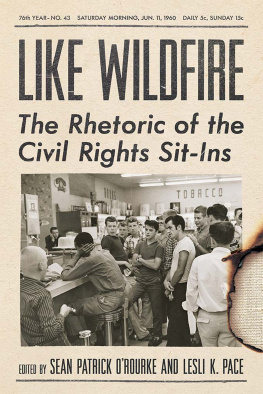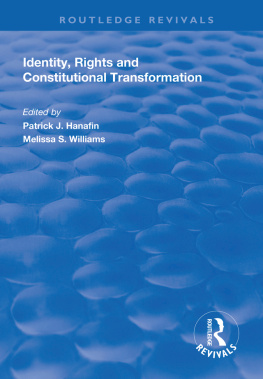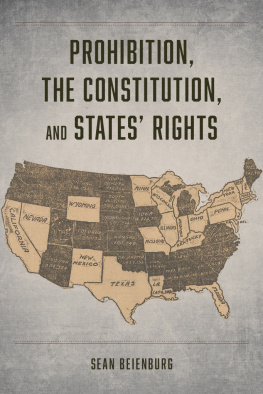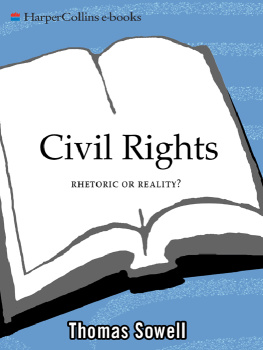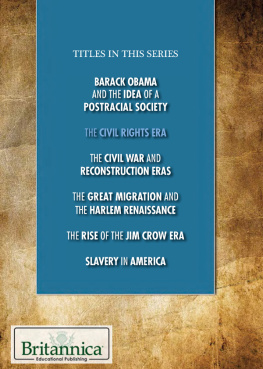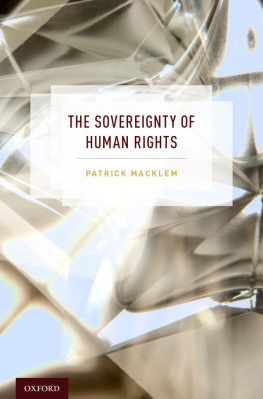Sean Patrick ORourke - Like Wildfire: The Rhetoric of the Civil Rights Sit-Ins
Here you can read online Sean Patrick ORourke - Like Wildfire: The Rhetoric of the Civil Rights Sit-Ins full text of the book (entire story) in english for free. Download pdf and epub, get meaning, cover and reviews about this ebook. year: 2020, publisher: University of South Carolina Press, genre: Politics. Description of the work, (preface) as well as reviews are available. Best literature library LitArk.com created for fans of good reading and offers a wide selection of genres:
Romance novel
Science fiction
Adventure
Detective
Science
History
Home and family
Prose
Art
Politics
Computer
Non-fiction
Religion
Business
Children
Humor
Choose a favorite category and find really read worthwhile books. Enjoy immersion in the world of imagination, feel the emotions of the characters or learn something new for yourself, make an fascinating discovery.
- Book:Like Wildfire: The Rhetoric of the Civil Rights Sit-Ins
- Author:
- Publisher:University of South Carolina Press
- Genre:
- Year:2020
- Rating:5 / 5
- Favourites:Add to favourites
- Your mark:
- 100
- 1
- 2
- 3
- 4
- 5
Like Wildfire: The Rhetoric of the Civil Rights Sit-Ins: summary, description and annotation
We offer to read an annotation, description, summary or preface (depends on what the author of the book "Like Wildfire: The Rhetoric of the Civil Rights Sit-Ins" wrote himself). If you haven't found the necessary information about the book — write in the comments, we will try to find it.
Like Wildfire: The Rhetoric of the Civil Rights Sit-Ins — read online for free the complete book (whole text) full work
Below is the text of the book, divided by pages. System saving the place of the last page read, allows you to conveniently read the book "Like Wildfire: The Rhetoric of the Civil Rights Sit-Ins" online for free, without having to search again every time where you left off. Put a bookmark, and you can go to the page where you finished reading at any time.
Font size:
Interval:
Bookmark:

Studies in Rhetoric/Communication
Thomas W. Benson, series editor
The Rhetoric of the Civil Rights Sit-Ins
Edited by
Sean Patrick ORourke & Lesli K. Pace

2020 University of South Carolina
Published by the University of South Carolina Press
Columbia, South Carolina 29208
www.uscpress.com
29 28 27 26 25 24 23 22 21 20
10 9 8 7 6 5 4 3 2 1
Library of Congress Cataloging-in-Publication Data
can be found at http://catalog.loc.gov/.
ISBN 978-1-64336-066-9 (hardback)
ISBN 978-1-64336-083-6 (ebook)
Front cover photograph: June 10, 1960 civil rights sit-in, Cherrydale Drug Fair, Arlington, Virginia; reprinted with permission of the D.C. Public Library, Star Collection Washington Post
Design by Emily Weigel (www.emilyweigel.com)
To our parents:
John W. ORourke, Jr., and Lois ORourke
Bob Pace and Jeanette Pace
Sean Patrick ORourke & Lesli K. Pace
Melody Lehn
David Miguel Molina
Joshua D. Phillips
Victoria J. Gallagher, Kenneth S. Zagacki & Jeffrey C. Swift
Judith D. Hoover
Sean Patrick ORourke
Stephen Schneider
Roseann M. Mandziuk
William H. Lawson
Lindsay Harroff
Rebecca Bridges Watts
Marilyn DeLaure
Casey Malone Maugh Funderburk & Wendy Atkins-Sayre
Diana I. Bowen
Jason Del Gandio
David Worthington
Keith D. Miller
In Like Wildfire: The Rhetoric of the Civil Rights Sit-Ins, editors Sean Patrick ORourke and Lesli K. Pace bring together a group of scholars to investigate the rhetorical structure, antecedents, and descendants of the Southern student lunch counter sit-ins of 1960. The resulting account of sit-ins and their variations through American history and across the American landscape, especially in the Jim Crow South, celebrates the courage, decency, and rhetorical acuity of the movement leaders and participants, against the backdrop of stubborn hatreds and habits of exclusion and exploitation, the recurring sin of American racism. ORourke, to take one small example, finds in the 1958 Code of Greenville, South Carolina, a requirement that public eating establishments maintain separate sets of dishes and utensils for black and white customers and that a separate facility shall be maintained and used for the cleaning of eating utensils and dishes furnished the two races. The hateful delicacy and rotten purity of such practices were made visible and untenable when well-dressed, young black customers, with modest courtesy and loving courage, simply sat at white lunch counters and ordered a Coke. The actions of the college students who participated in those sit-ins were hardly protests at all but simply the enactment of ordinary, everyday shopping; they were protests only in context of the opposition with which they were met and not in the form that they presented in their enactment, and yet they are central to the history of American social protest and nonviolent direct action. The essays in this book help to illuminate the design, context, and development of the sit-ins as a rhetorical practice and open the way to ongoing work.
Thomas W. Benson
Series Editor
Completion of this book has been long and arduous. We want to take a moment to thank the wonderful staff of the USC Press, who could not have helped more. We also want to acknowledge here our sincere appreciation and respect for one another, as well as note the value we place on our friendship even in the face of the most challenging aspects of this scholarly endeavor. Deep thanks also to Mike McDonald, Lili and Ian Pace McDonald, Tierney ORourke, Jamie Capuzza, and our wonderful contributors for their support, patience, flexibility, and encouragement. Sean would also like to thank his Sewanee colleagues Melody Lehn and Terry Papillon, and Lesli would like to thank her ULM colleague C. Turner Steckline Wilson, for their good cheer, unflagging support, continued friendship, and unwavering encouragement. We would also like to thank the University of Louisiana, Monroes College of Arts, Education, and Sciences Research Hub for awarding a mini-grant that allowed us to hire Teresa Abney to support the development of a master list of citations and Sewanee: The University of the Souths Faculty Research Grants Committee for funding Camille Stallingss work on the books index. Finally, we wish to thank Adam Hawkins for his considerable help with the manuscript.
Civil Rights Sit-Ins and the Rhetoric of Protest
Sean Patrick ORourke & Lesli K. Pace
The sit-ins of the civil rights movement were some of the most extraordinary acts of protest in an age defined by protest. By sitting in at whites only lunch counters, libraries, beaches, swimming pools, skating rinks, and churches, young men and women put their bodies on the line, fully aware that their actions would almost inevitably incite savage, violent responses from entrenched and increasingly desperate white segregationists. And yet they did so in enormous numbers: estimates suggest that in 1960 alone more than seventy thousand people participated in sit-ins across the American South, and more than three thousand were arrested. The simplicity and purity of the act of sitting in, coupled with the dignity and grace with which most participants acted, lent to the sit-in movement a kind of sanctity difficult to find in other protest demonstrations.
Nearly everyone recognizes the importance and galvanizing influence of the sit-ins, both on the civil rights movement generally and on student activism more particularly. The sit-ins had, as Howard Zinn puts it, an electrical effect that marked a turning point for black Americans.
The standard story of the civil rights sit-ins is well known. According to that narrative, the sit-ins began in Greensboro, North Carolina, on February 1, 1960, expanded to Nashville, Tennessee, and other cities in Virginia and the Carolinas later that month, and swept across the South that spring and summer. They gave rise to the Student Nonviolent Coordinating Committee (SNCC), provided black students a powerful and effective forum for protest, transformed the social and economic culture of the segregated South, and opened a new front in the battle to desegregate.
And yet that narrative is partial at best and misleading at worst. It endures in part because of a disturbing lack of scholarship on the sit-ins. For decades the sole single-authored, book-length study of the movement was Martin Oppenheimers The Sit-In Movement of 1960, written in 1963 as the authors Ph.D. dissertation and published, without changes, in 1989.
There are, of course, a few studies of sit-ins in individual cities, but a good portion of these are short essays, some aimed at more popular audiences, and the group as a whole represents a mere fraction of what can and needs to be done. The truth is that despite considerable scholarship on the movements most visible high points (e.g., Greensboro and Nashville), local and regional historians have only recently begun the long and difficult effort of recovering the lost and all too often forgotten chapters of the sit-in movement. As a result we lack even shallow histories of the hundreds of other sit-ins against segregation during the 1960s and have very little at all on the important sit-ins before Greensboro. Perhaps even worse, the rhetorical aspects of the sit-ins remain
Font size:
Interval:
Bookmark:
Similar books «Like Wildfire: The Rhetoric of the Civil Rights Sit-Ins»
Look at similar books to Like Wildfire: The Rhetoric of the Civil Rights Sit-Ins. We have selected literature similar in name and meaning in the hope of providing readers with more options to find new, interesting, not yet read works.
Discussion, reviews of the book Like Wildfire: The Rhetoric of the Civil Rights Sit-Ins and just readers' own opinions. Leave your comments, write what you think about the work, its meaning or the main characters. Specify what exactly you liked and what you didn't like, and why you think so.

